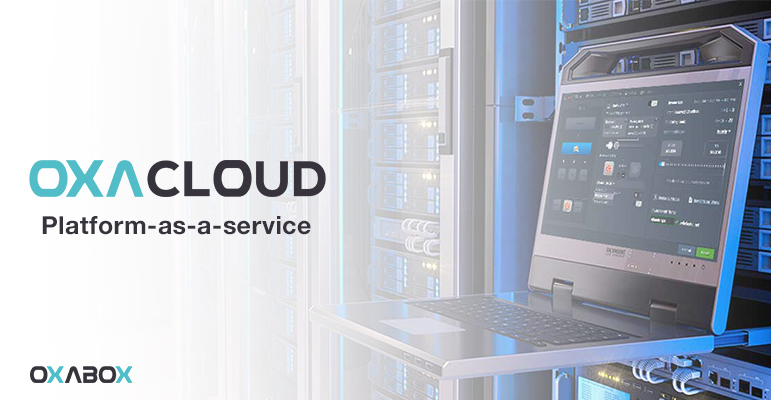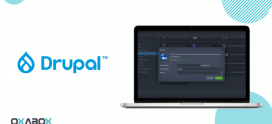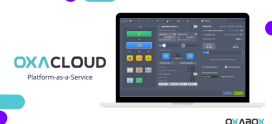
Why choose Oxacloud PaaS and not VPS or shared hosting
WHY YOU SHOULD USE Oxacloud PLATFORM-AS-A-SERVICE INSTEAD OF SHARED HOSTING OR VPS
Here are the top 4 reasons to move to OxacloudPlatform-as-a-Service:
Well, if you are running that application on shared hosting or VPS, it’s likely that you will spend a lot of resources managing scalability issues of your application, you will have to self-manage and eventually get disillusioned with your solution.
With shared hosting you have to get bigger boxes, move applications off the server to make room, scale vertically until your application require more resources than available in a single physical server.
With VPS, you might be able to vertically scale and even scale out to multiple servers, but it takes a lot of time, configuration effort, potential downtime of applications and stress.
That is why, because usually your VPS instance contains all the components of your application, i.e. web server, load balancer, database, etc. It is hard to setup a proper scaling of each individual component. Moreover, if one of the components accidentally goes beyond allowed resources, it may negatively effect on scalability and performance of the rest components of your application.
With Oxacloud, you SELF-MANAGE your application environment including scale-up and scale-out parameters. You can simply use the graphical user interface to define an application environment (app servers, load balancers, databases, IP addresses) and set scaling limits within a single server and across multiple servers.
Oxacloud places all the stacks that are required by your application into separate virtual containers, which are spread across physical infrastructure.
After that, scaling happens AUTOMATICALLY, with no configuration or resizing by your or the service provider. Each component of your application (load balancer, application server, SQL or NoSQL database) can be SCALED INDEPENDENTLY of other components.
In the case your application becomes highly popular and a single server’s capacity is not enough, feel free to scale it horizontally by means of increasing the number of nodes manually or configure a set of triggers for AUTOMATIC HORIZONTAL SCALING of your application server.
In case of horizontal scaling Oxacloud will add load balancer automatically and properly configure HTTP load balancing with sticky sessions support.
You can set the minimum and maximum allowed amount of nodes, as well as the conditions for their addition or removal, by means of tunable triggers. Herewith, there are five types of monitoring triggers available, which are based on the usage of a particular resource type, namely:
- CPU
- Memory (RAM)
- Network
- Disk I/O
- Disk IOPS
The same configuration for VPS requires a lot of manual efforts and expertise, and seems to be a headache for most of developers.

EASIER MANAGEMENT THAN VPS
Want to manage your own solution from the ground up? How much time and resource are you spending managing VPS and shared hosting for your application? How much time is spent updating packages, applying security patches and configuring systems? What about reconfiguring users as they grow?
The promise of the cloud is simplicity and efficiency, and the DevOps trend encourages a segregated management approach where IT/operations (the hosting provider) manages the infrastructure, security, compliance, tools and the developer self-manages the application environment.
Oxacloud fully embraces this approach.
The developer dashboard provides all the tools to configure and deploy an application in the cloud via a simple GUI (there is also an API and CLI tool for programmatic access to these features).
Oxacloud provides a choice between Apache and NGINX for PHP and Ruby, and allows Java developers to use Tomcat and Jetty, as well as four enterprise-ready application servers – GlassFish, JBossAS, Wildfly and TomEE. Also Oxacloud supports both SQL (MySQL, MariaDB, PostgreSQL) and NoSQL (MongoDB, Cassandra, Neo4j, Redis and CouchDB) database types.
Moreover, your will be provided with a rich tool set to analyze and monitor your application.
Pick your favorite app server. Add a database if required. Set your limits for vertical and horizontal scaling (if multiple instances are required load balancers will be automatically configured) and you are ready to go.
Oxacloud automatically installs, configures and interconnects your server instances with your selected software stacks.
You don’t need to code to our APIs – just upload your application and select your stack. You can also mix and match software stacks at will.
Oxacloud sets replication between pairs of application servers using multicast replication; these pairs form clusters. If one of the instances fails, the users who were on that instance get automatically switched to the other instance in the cluster.

BETTER SECURITY THAN SHARED HOSTING (AND OTHER PaaS SOLUTIONS)
In a shared hosting environment customer applications are compromised by definition. They run in one shared environment with other apps. What happens if one of those applications misbehaves and takes the system down? What happens if there is a server failure?
Even worse, what happens if there is a security breach?
Oxacloud was the first commercially available PaaS to recognize the benefits of container technology. With containers, each application and its environment is isolated from the others.
This provides a built-in mechanism for security. Applications that crash or misbehave are isolated to their container and do not affect other apps. Each container is controlled for scalability and resource consumption so applications do not consume all the resources on a given server (Oxacloud also (uniquely) controls this using live migration of apps across servers if server resources are running short).
But don’t all virtualization solutions isolate applications? Can’t all PaaS/IaaS/VPS solutions do this?
Well, no. Traditional virtualization solutions provide a complete OS environment to one or more applications, impacting security and making it very difficult to scale once a VM is full.
And not all PaaS solutions use containers. Even the ones that do probably require you to use a PaaS from one vendor and an Infrastructure (IaaS) form another.
How secure is that? Are the interfaces between the two vendors secure? Fully understood? Optimized? When Amazon changes the functionality of AWS does it notify all the PaaS vendors using the infrastructure? I think we all know the answer to that.
Only Oxacloud provides the built-in security of a turnkey, rock-solid, integrated solution from the OS up. We pioneered the use of container technology in PaaS and the others followed our lead. Now the industry is talking about the benefits of integrating PaaS and IaaS. We are already there.
LOWER PRICING AND MULTI-TENANCY THAN VPS
Oxacloud Platform-as-a-Service provides application level container isolation but can run multiple environments in a single server, providing all the benefits of multi-tenancy without the risks.
As seen above, the management of environments, as they scale, is significantly reduced over VPS also.
But Oxacloud also offers at least a 30% improvement in density over VPS solutions because application environments (containers) can auto-scale within a server for a couple of important reasons.
First, VPS environments are almost always over-provisioned to allow for scalability without complex reconfiguration, significantly impacting the density of applications on a server.
Oxacloud auto-scaling features mean that over-provisioning can be minimized or even eliminated since application environments dynamically scale up and down using only the resources they need. Applications that are not in use can even hibernate and release all the server resources back into the pool.
Automatic vertical scaling is made possible by Oxacloud ability to change the amount of resources (RAM and CPU), provided to a container. This feature guarantees you never overpay for unused resources, ensuring a very granular and thus a fair pricing, and saves your time because there is no need for manual adjustments or architectural changes. You simply decide the maximum limit you are ready to consume and Oxacloud automatically defines the optimal amount of resources required for your app, tracking the incoming load in real time.
The automatic vertical scaling feature is applicable for any type of container in an environment (i.e. application server, database, load balancer, cache instance and build node), providing an ability to scale all kinds of apps, including the stateful and legacy ones, and even those that were not designed for being horizontally scaled (what is not a trivial mission).
Automatic vertical scaling up and down in a combination with hourly-based billing makes your monthly bills less than that of VPS or IaaS, due to the fact that with Oxacloud you pay for your actual resource consumption, not the instance size.

Second, Oxacloud provides the ability for applications to be migrated to a different server without downtime. This “live migration” provides the ability for popular applications to scale vertically while moving other applications to a different server in the pool.
These features also improve scalability, security and reduce management of customer environments.
Estimate the resources you need during the trial period and use our simulator to determine the hourly or monthly rate for your PaaS. You can adjust your configuration at any time, without interruptions or additional costs. Let’s go ! Set your limits and keep your costs to a minimum!



